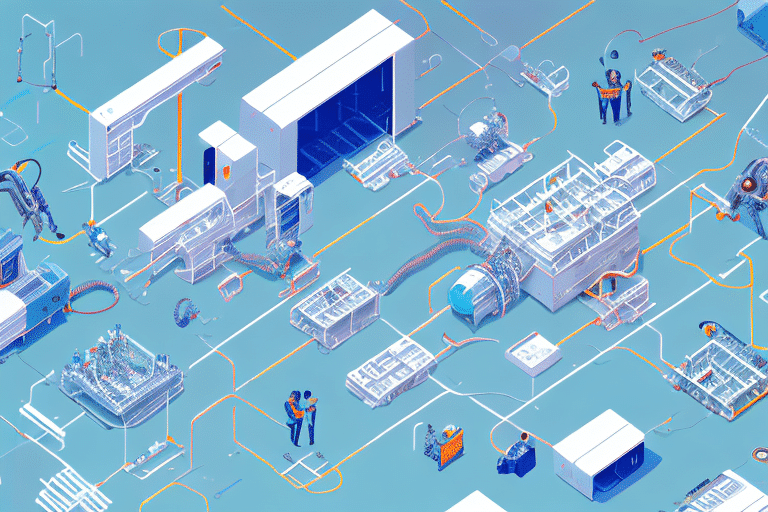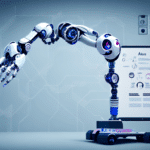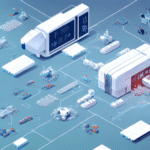The Role of Automation in Enhancing In-house Operations
Automation has become a pivotal component in optimizing in-house operations across various industries. By leveraging technology to execute tasks that were traditionally performed manually, businesses can achieve significant improvements in efficiency, accuracy, and cost management. This comprehensive analysis explores the multifaceted impact of automation, its benefits and challenges, the types of automation technologies available, and best practices for successful implementation.
Benefits of Automation in In-house Operations
Increased Efficiency and Productivity
Automation streamlines processes, significantly reducing the time and resources required to complete tasks. For instance, robotic process automation (RPA) can handle repetitive tasks such as data entry and inventory management with greater speed and precision compared to manual efforts. According to a McKinsey report, automation can boost productivity by up to 30% in certain sectors.
Enhanced Accuracy and Reduced Errors
Automated systems minimize the likelihood of human error, ensuring higher levels of accuracy in operations. By adhering strictly to predefined processes, automation tools consistently produce reliable outcomes, which is crucial for maintaining quality control and customer satisfaction.
Cost Savings
Implementing automation can lead to substantial cost reductions by decreasing the need for manual labor and lowering operational expenses. A study by Deloitte indicates that businesses can save up to 20% on operational costs through strategic automation initiatives.
Challenges and Risks of Automation
Initial Implementation Costs
While automation offers long-term savings, the initial investment can be substantial. Costs include purchasing technology, integrating systems, and training employees. However, the return on investment (ROI) often justifies these upfront expenses over time.
Job Displacement and Workforce Adaptation
Automation can render certain job roles obsolete, leading to workforce displacement. It’s essential for companies to address this by providing retraining programs and opportunities for employees to transition into new roles within the organization.
Technical Failures and Downtime
Dependence on automated systems introduces the risk of technical failures, which can disrupt operations. Implementing robust backup systems and regular maintenance schedules can mitigate these risks.
Types of Automation Technologies in In-house Operations
Robotic Process Automation (RPA)
RPA automates repetitive, rule-based tasks such as data entry, transaction processing, and report generation. By mimicking human actions, RPA increases efficiency and reduces errors.
Artificial Intelligence (AI) and Machine Learning
AI enables systems to perform complex tasks that require decision-making and problem-solving. Machine learning algorithms allow these systems to learn and improve over time, enhancing their effectiveness in areas like predictive analytics and natural language processing.
Business Process Automation (BPA)
BPA involves the integration of various systems and software to automate end-to-end business processes. This holistic approach ensures seamless operations across different departments, improving overall organizational efficiency.
Best Practices for Implementing Automation
Identify Suitable Processes for Automation
Begin by analyzing existing workflows to identify tasks that are repetitive, time-consuming, and prone to errors. Prioritizing these areas can yield the most immediate benefits from automation.
Ensure Seamless Integration with Existing Systems
Successful automation requires that new tools integrate smoothly with current IT infrastructure. This involves coordinating with IT teams to ensure compatibility and data consistency across platforms.
Provide Comprehensive Training for Employees
Equipping employees with the necessary skills to work alongside automation tools is crucial. Training programs should focus on both technical aspects and change management to facilitate a smooth transition.
Monitor and Evaluate Automation Performance
Regularly assessing the performance of automated systems helps in identifying areas for improvement. Metrics such as productivity rates, error rates, and cost savings should be tracked to evaluate the effectiveness of automation initiatives.
The Future of Automation in In-house Operations
As automation technologies continue to evolve, their role in in-house operations is expected to expand further. Emerging advancements in AI and machine learning will enable even more sophisticated automation capabilities, allowing businesses to achieve higher levels of efficiency and innovation. Additionally, the increasing adoption of intelligent automation will provide organizations with the tools to better adapt to dynamic market conditions and customer demands.
Case Studies: Successful Implementation of Automation
Manufacturing Industry
In the manufacturing sector, companies have utilized automation to streamline production lines, resulting in increased throughput and reduced operational costs. For example, Autodesk implemented robotic systems that enhanced assembly precision and efficiency, leading to a 25% increase in production capacity.
Finance Sector
Financial institutions have adopted automation tools to manage tasks such as invoice processing and customer data verification. These systems have not only accelerated transaction times but also improved compliance and reduced error rates. According to a PwC report, automation in finance has contributed to a 15% reduction in processing costs.
Conclusion
Automation plays an increasingly critical role in optimizing in-house operations, offering numerous benefits including enhanced efficiency, accuracy, and cost savings. While challenges such as initial implementation costs and workforce adaptation must be managed, the strategic adoption of automation technologies can provide a substantial competitive advantage. By following best practices and staying abreast of technological advancements, businesses can effectively leverage automation to drive growth and operational excellence.




















